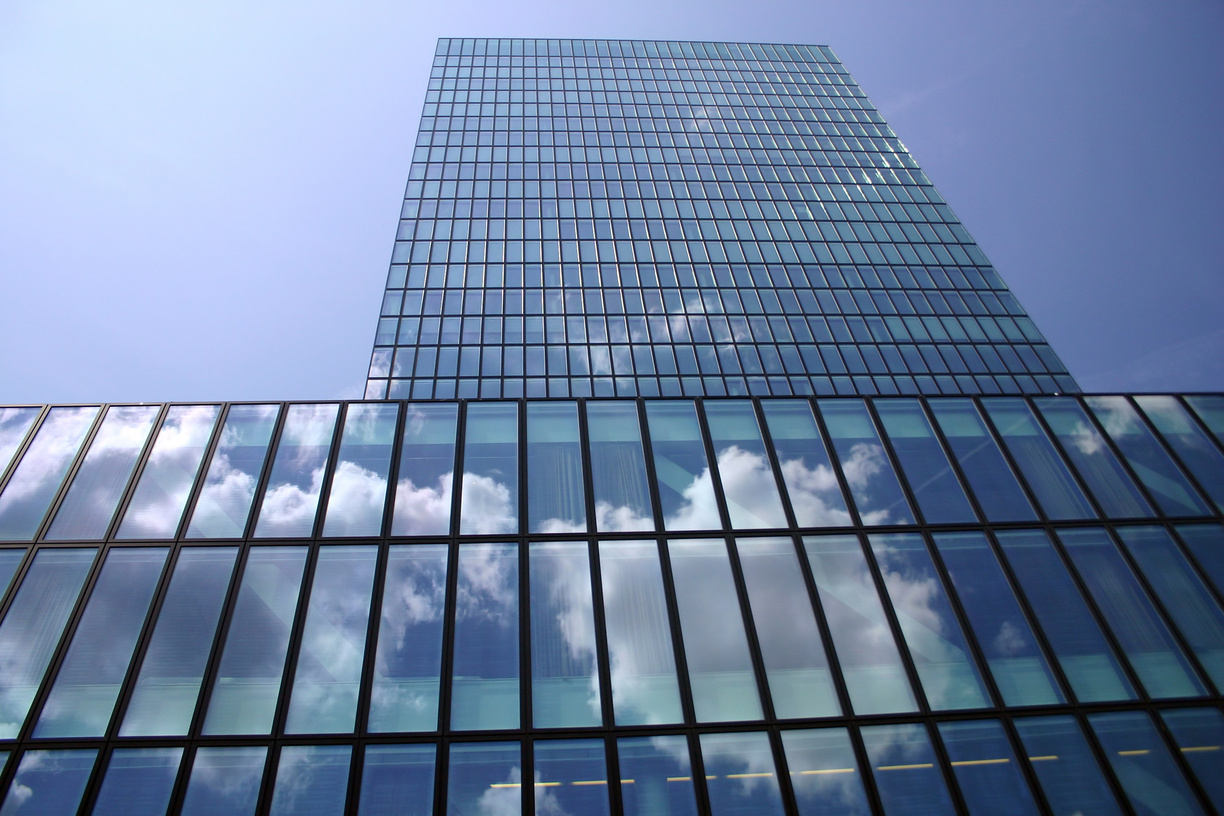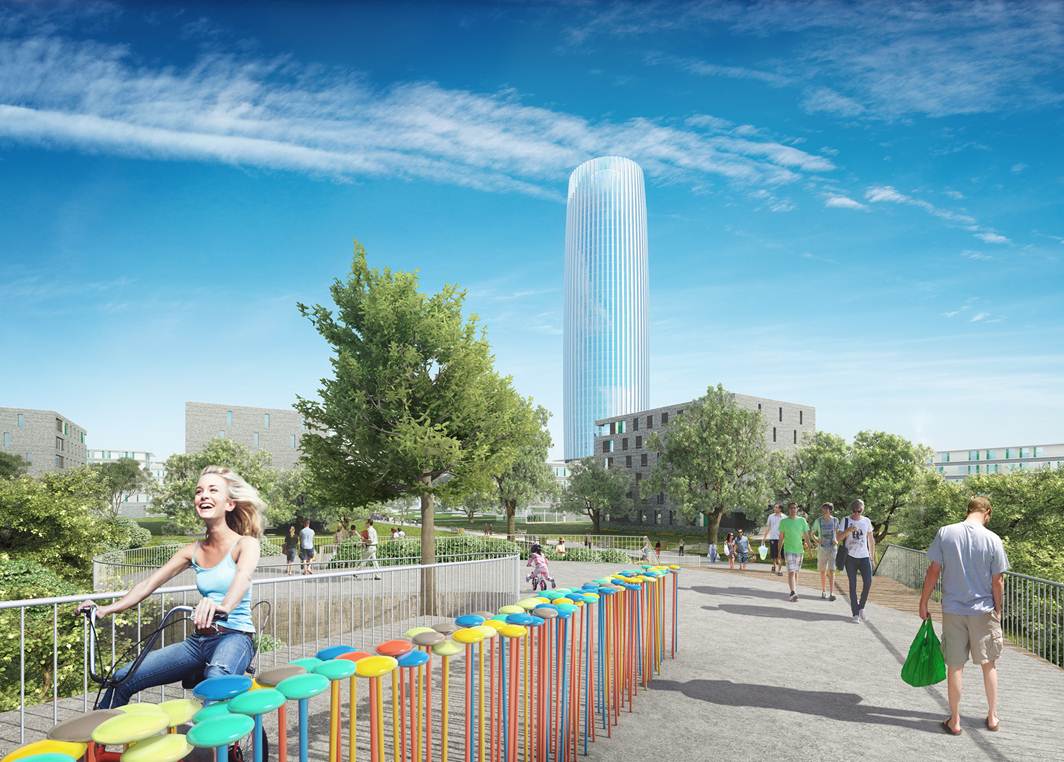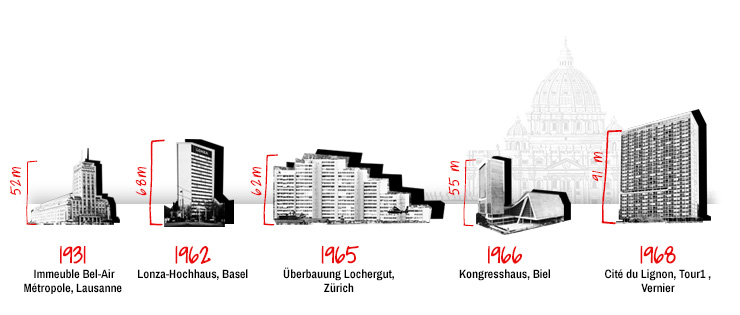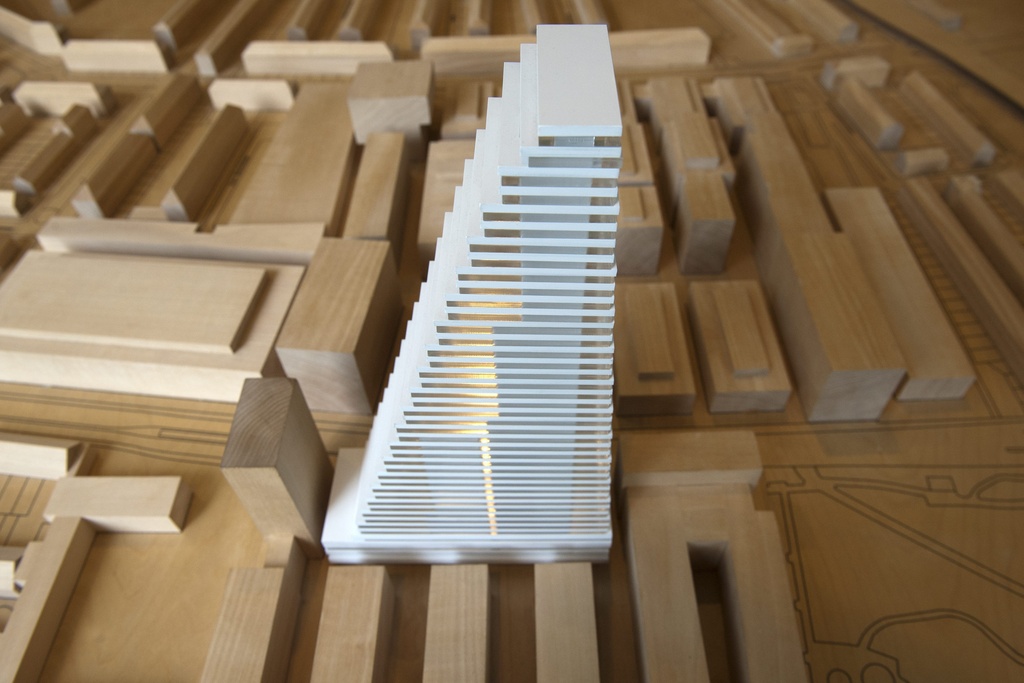Switzerland reaches for the skies – despite protests

Many Swiss dream of a house in the countryside – but the consequences are often urban sprawl and limited land availability. The targeted concentration of cities and suburbs has led to a skyscraper boom. Despite opposition and long permit processes, it seems there’s no end in sight.
The Lausanne architecture practice Richter Dahl Rocha has been planning a spectacular, 120-metre high skyscraper in the city for 22 years. The tower is meant to be a symbol of the profound change taking place in the Lausanne metropolitan area while marking the start of a high-rise boom in the French-speaking western part of Switzerland.
Skyscrapers have been popping up like mushrooms all over the German-speaking part of Switzerland for years: Zurich has the Prime and Mobimo towers, Basel has the Trade Fair Tower. There are even high-rises being built or planned in provincial cities and in the agglomerations.
In all, around 140-160 towers are being planned in Switzerland at the moment, according to real estate specialists Wüest and Partner.
Change in the west
“People are not so convinced about skyscrapers in western Switzerland. The lack of real estate is even stronger here than in the German-speaking part because basically less is built,” Hervé Froidevaux, partner at Wüest and Partner, told swissinfo.ch.
“People really want to see flats and not necessarily big and expensive hallmarks. Perhaps things will now change.”
The “change” referred to was the February 9, 2014, vote in the Lausanne suburb of Chavannes-près-Renens, in which two thirds of those polled were in favour of a land use plan for the area, at the heart of which is the tower that’s been in the planning stages for over two decades.
The long planning time is partly due to the size of the development. “It was a complex administrative process, plus the landowners changed four times during this period,” explained Jacques Richter from Richter Dahl Rocha. “The local authorities were on board from the beginning about building a landmark. But the population needed a lot of convincing, as they were mostly against it at the beginning.”

Poles apart
Now it’s all about finding investors. “It’s still not clear if the tower will be built to our designs,” Richter said. “But it’s always been clear that there would be a restaurant at the top and that the building would be open to the public.”
“People said that they liked the pictures of the tower, that it was elegant. They have been less enthusiastic about the looks of other skyscrapers. Basically, it’s a very emotional thing – either people love high-rises or they hate them,” he added.
“This has a lot to do with exposure. If you’ve been in a skyscraper in New York and seen the city from above, then you are usually more enthusiastic. Others don’t want them because they perceive them as a symbol of power and degeneration.”
Vision and shade
A skyscraper has a dazzling symbolism. For those at the bottom, the sun is blocked out. Those at the top have vision and money. But this is not the main problem, sociologist Joëlle Zimmerli told swissinfo.ch.
“The problem is the location. If the majority are allowed to go in, there would be a higher acceptance,” she said.

Switzerland already witnessed a skyscraper boom in the 1960s, mostly in Zurich and Bern. Then, land scarcity was not yet an issue and some of the buildings were put up in fields outside city centres. For several years now they have been reaching for the skies in urban areas as well.
“Skyscrapers lost their lustre after the building boom of the 1960s due to the social problems that developed around them,” said architect Michael Hirschbichler of the Institute of Urban Design at the Federal Institute of Technology in Zurich, referring to the ghettoisation that brought some skyscrapers into disrepute during this time.
“In those days people built modernistic social housing typologies. The new skyscrapers are metropolitan status symbols which appeal to a totally different layer of society.”
Role of tradition
Although property developers are touting a boom and many high-rises are planned, acceptance among the population is still mixed, said Hirschbichler.
“In Switzerland the connection to the traditional, provincial city is much stronger than in other countries. But even in Germany and Austria discussions have shown that there is quite a bit of fear about high-rises drastically changing cities, that new icons will emerge with uncertainty over what they stand for.”
And in Switzerland – unlike in Chicago or Dubai – “the historical structure is too important and meaningful to make huge changes without due consideration”.
Big Swiss cities such as Zurich, Bern, Basel, Geneva and Bern still have intact historic centres. Bern’s old city has been on the UNESCO World Heritage List since 1983.
Experts can’t agree on how much high-rises have contributed to the densification of urban areas because – due to the fact that they cast shadows and thus have special building regulations – they have to be surrounded by open spaces.
“They are a prominent and important typology in densification, but there are other typologies which contribute more to it,” said Hirschbichler.

Reasons for rejecting a skyscraper can be found in the reactions to the “Taoua” tower which is being put to the vote in Lausanne on April 13. For liberals, it is a “concentration of capital” that is being pushed by “unsavoury speculators” and politicians fixated on the attractiveness of location and which will result in an “unfavourable” demographic development.
Conservatives fear that these buildings will impede people’s views and question whether such symbols are necessary.
However, Lausanne mayor and Green Party member Daniel Brélaz counters that “today we would not have a cathedral with a bell tower or a university hospital if every project had been subject to a popular vote”.
(Translated from German by Isobel Leybold-Johnson)

In compliance with the JTI standards
More: SWI swissinfo.ch certified by the Journalism Trust Initiative

You can find an overview of ongoing debates with our journalists here. Please join us!
If you want to start a conversation about a topic raised in this article or want to report factual errors, email us at english@swissinfo.ch.